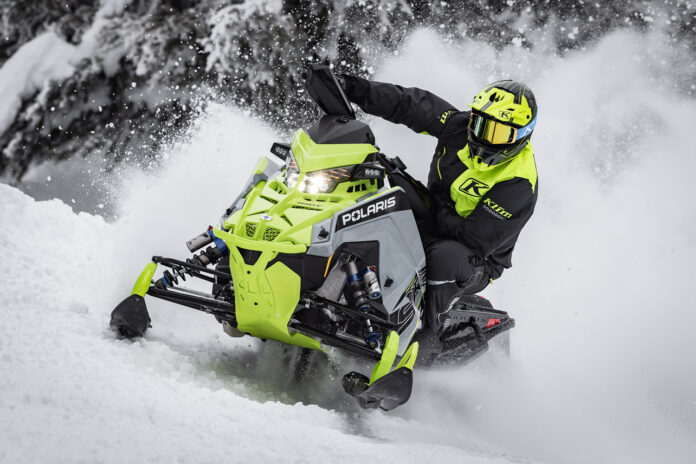By now you’ve likely figured out the maximum displacement of a big bore, 2-stroke hypersled is supposed to be 850 ccs, right?
Although there’s no official rule that 850ccs should be the largest allowable displacement for a 2-stroke sled’s engine, Arctic Cat, Polaris and Ski-Doo have all ended up at this number. The question is: Why has “850” almost universally become the benchmark?
From the conversations I’ve had with people who are in the know, people who eat, breath and sleep snowmobiles and the technology required it takes to build them, the 850 zone provides what is largely accepted as the biggest displacement you can use to build a 2-stroke twin without having it vibrate you and the sled it’s mounted in right off the trail and into the ditch.
This seems like a compelling enough argument, except for one thing. Until Ski-Doo introduced the G5 REV platform and Polaris landed the Patriot 850 in the MATRYX, both these manufacturers had an 850 with some uncontrolled shaking.
Flying in the face of these last couple paragraphs Polaris goes full speed ahead developing a Patriot-based variant called the 9R. Its team knew full well the risks of creating an uncivilized engine when the 9R project embarked. The engine is every bit as smooth and buttery as the 850 Patriot mounted in a MATRYX chassis due in part to two unrelated issues.
First, Polaris developed a new motor mounting system employing five mounts. This looks after any and all vibrations emanating from the naturally aspirated 850, Patriot BOOST and now the 9R. Second, the 9R uses a special lightened crankshaft which further calms the engine making it feel completely refined.
Here’s the issue on everyone’s mind. What’s the power output of the 9R when compared to the other two 850 Patriot variants? Let’s assume the naturally aspirated 850 makes 165 HP. Polaris claims the Patriot BOOST produces 12 more horsepower than that, which for sake of argument let’s say that amounts to just shy of 180 horsepower. So what about the 9R in comparison? Polaris claims the 9R produces 9 more ponies than the naturally aspirated 850, which we can say amounts to approximately 175 horses.
Unfortunately, at this spring’s Snowshoot event in West Yellowstone we couldn’t accurately perform any meaningful comparisons of the BOOST versus the 9R. Why? The Boosted (turbocharged) 850 doesn’t know it’s at 6600 feet elevation in West Yellowstone. It automatically adjusts its wastegate to bring the engine back to its maximum programmed horsepower.
The 9R doesn’t use a hairdryer to make power so any of the numbers posited above mean absolutely nothing at 6600 feet. Truth is the 9R is faster than an 850 but to compare it to the BOOST would be meaningless until we get our hands on both engines in comparable chassis like an XCR 9R 136 and a VR1 BOOST 137 at sea level.
So, here’s what I can tell you. The 9R knocked our socks off with its low inertia crank spooling up like its telepathically hooked to your thumb. The engine feels super smooth at both idle and engagement. At trail speeds it would be impossible to perceive any difference between the civility of the 9R and a stock Patriot 850 except for one noticeable trait. Throttle response felt extra urgent and strong at trail velocities. Corner-to-corner acceleration is immediate and without humps or bumps.
Would I pony up the extra cash to buy a 9R? Yep, I would. There’s so much cache with having one of these rockets, I find it pretty much irresistible.
So, would I walk by the 9R for an 850 Boost? Doggone it, that right there might be the toughest question for MY25.








